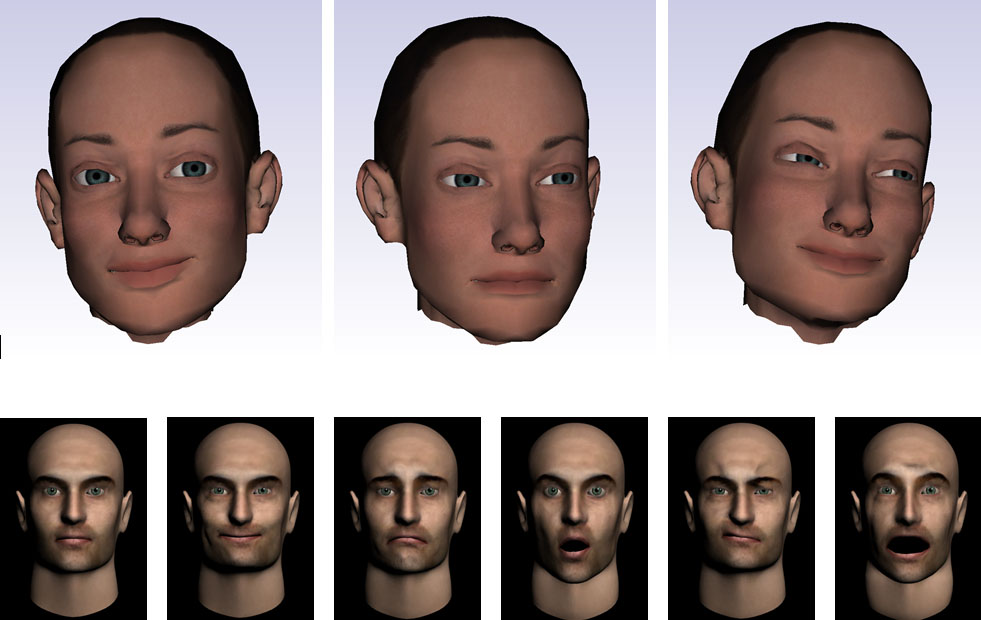
A Versatile and Interactive Anatomical Human Face Model
Abstract
In a compelling virtual world, virtual humans play an important role to improve the illusion of life and to interact with the user in a natural way. In particular, the face motion is crucial to represent a talking person and convey emotive states. In a modern videogame, approximately 5-10% of the frame cycle are devoted to the animation and rendering of virtual characters, including face, body, hair, cloth, interaction with the surrounding virtual environment and with the final user. Facial blend shapes are commonly adopted in the industry to efficiently animate virtual faces. Each blend shape represents a key pose of the face while performing an action (e.g., a smiling face or raised eyebrows). By interpolating the blend shapes with each other, as depicted in Figure 1, the artist can achieve a wide number of facial expressions in real time at a negligible computational cost.